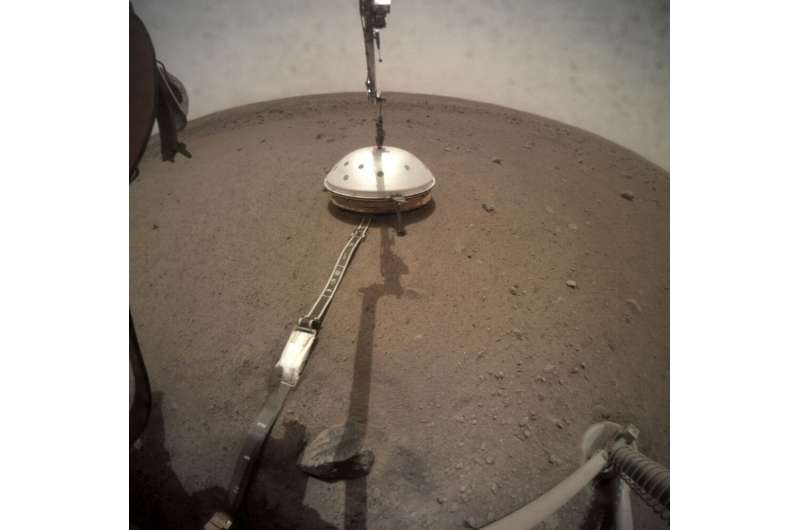Weather on Mars: Chilly with a chance of 'dust devils'

If you're planning a trip to Elysium Planitia on Mars, pack a sweater.
Beginning today, NASA's Jet Propulsion Laboratory will provide daily weather reports for Mars, courtesy of the red planet's newest robotic resident, InSight.
"The InSight lander is close to the Martian equator – just north of the equator – so it is experiencing Martian winter," said Cornell's Don Banfield, the mission's lead for the lander's Auxiliary Payload Subsystem (APSS), a suite of meteorological sensors on the lander's deck that also helps with quake detection.
"For our mission, APSS will help us filter out noise in our data and know when we're seeing a Mars quake and when we aren't," said Banfield, a principal research scientist in the Department of Astronomy, in the College of Arts and Sciences. "But by operating continuously, we'll also see a more detailed view of the weather than most surface missions, which usually collect data for just a few hours at a time."
Currently, Mars' northern hemisphere sits in winter – the stormy season.
"Since the lander is close to the equator, I didn't think we'd see any evidence of the storms that are 60-degrees north latitude, but we're already seeing evidence of the high and low pressure-signal waves that create weather on Mars," Banfield said. "We can see those waves all the way down near the equator, as the waves are big enough that they have a signature. That was a surprise."
The pressure signals oscillate every 2.5 sols (the name for days on Mars), and the waves are easier to predict as opposed to how pressure waves behave on Earth, Banfield said. One sol is about 24 hours, 39 minutes long.
"High and low pressure is indicative of the weather systems," he said. "Compared to Mars, Earth is pretty chaotic. Mars has a nearly perfect, smooth sinusoidal (up and down) waves – it's a very regular seesaw guided by a metronome on Mars. On Earth, the pressure is guided by a hyperactive child."
Mission scientists said the coldest temperatures – as cold as minus 139 degrees Fahrenheit – occur at around 5 a.m. local time. The warmest temperatures have been 23 F.
When the sun heats up the Martian surface, scientists have observed strong convective overturning.
"Think of a pot of water boiling – the water is overturning vigorously. That happens on Mars, too," Banfield said. "The atmosphere near the ground bubbles up like a buoyant plume of air. It happens on Earth, too, but you don't feel it as much. On Mars it happens with a lot more vigor."
In another surprise, mission scientists are observing many "dust devils" – those ghostly, low-pressure, tornado-like whirls of Martian soil.
"They spin at nearly 60 miles per hour," Banfield said. "They do shake the lander, and we've seen a lot of that. They even tilt the ground, [which we know] because we have such a sensitive seismometer. On Earth, the desert's dust devils would be likely 15 meters across and almost a kilometer tall. On Mars, they can be 5 to 10 kilometers (3 to 6 miles) tall. Big ones are 100 meters or more in diameter."
The InSight craft landed in late November and is preparing to monitor the geologic interior of the planet.
Provided by Cornell University





















